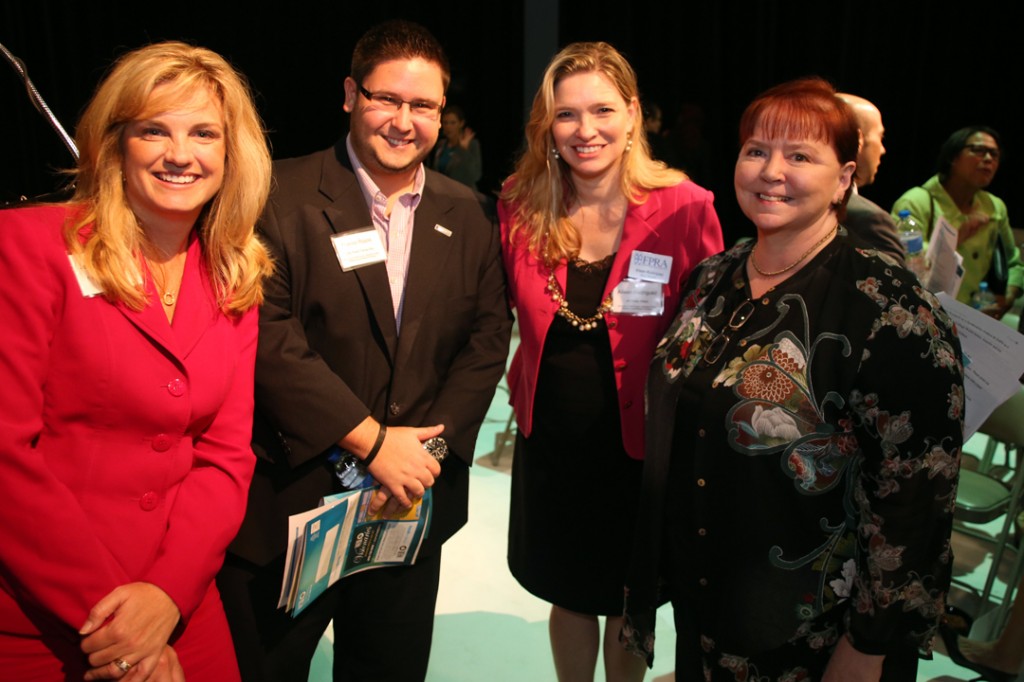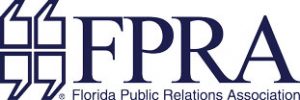By Aileen Rodriguez, FPRA Tampa Bay Chapter Programs Co-Chair and Juliette Lauer, FPRA Tampa Bay Chapter Social Media Chair
6 Takeaways written by Ashley Pero, Non-Profit Leadership Center

Panelist Jennifer McVan, Media Relations Manager at Florida Hospital; Franco Ripple, Public Affairs Director at CBS Radio; Aileen Rodriguez, President at AR Public Affairs; Susan Howarth, CEO at WEDU Studios
In July, the FPRA Tampa Bay Chapter and AR Public Affairs & Strategic Solutions partnered to host the 3rd annual Non-Profit Forum: Effective Public Relations and Media Practices. Created by AR Public Affairs, the event is offered free to Tampa Bay area non-profit organizations with the purpose of educating non-profit professionals on effective ways to work with the media to better promote their organizations.
Well known journalists and public relations experts spoke on a panel and discussed the topics of media relations, social media and crisis communications for non-profits. The event was underwritten by local sponsors. An audience of 150 guests attended the event; representing more than 120 organizations from across the Tampa Bay region.
Ashley Pero of The Nonprofit Leadership Center shares her six biggest takeaways with us below.
1. It’s all about the story! Each panelist shared how important the story is to getting coverage. Ernest Hooper of the Tampa Bay Times, “Journalists are passionate about telling impactful stories.” Before you send a press release or pitch your idea to the media ask yourself why people should care about this? How does this make someone’s day or impact their life? If you can answer those questions, there is your story!
2. If you know one reporter, you know one reporter. Personal relationships (just like in fundraising) are key. Get to know reporters who cover the things that impact your organization and get to know how they like to be communicated with and what moves them.
3. Make all information easy and accessible. Include all the important (who, what, when, why and how) in the body of your email. Attachments are fine, but with 600+ emails a day reporters need to be able to skim and see what is important – don’t make it hard for them!
4. Know where your audience is on social media and go there, don’t expect them to go where you want them to be. If you want to be on LinkedIn but your supporters, clients and the public you are trying to reach are on Facebook then you need to be on Facebook, not spending your time trying to get them on LinkedIn (hint: it would be a waste of your time).
5. Every organization should have a disaster and crisis communication plan. Disasters and crisis’s happen without notice (surprise) and you need to be ready to react and communicate. Take the time to prepare (and practice) now so when something goes wrong everyone knows what to do and how to do it. Scary but true, a poorly handled crisis can be the end of your organization.
6. You are your organization’s best advocate. You know your clients and the impact you are making in the community – you know your story. Be able to tell it and get it out there and you’ll have media wins. Just remember, it isn’t about how low your overhead is, it’s about the child that went to bed with food last night because of the work you do. Never forget the human angle.
If you’re interested in more information, visit the Tampa Bay Chapter’s event page or AR Public Affairs 2013 Non-Profit Forum page to download a copy of the 2013 Non-Profit Forum media resource guide and Social Media reference sheet.
